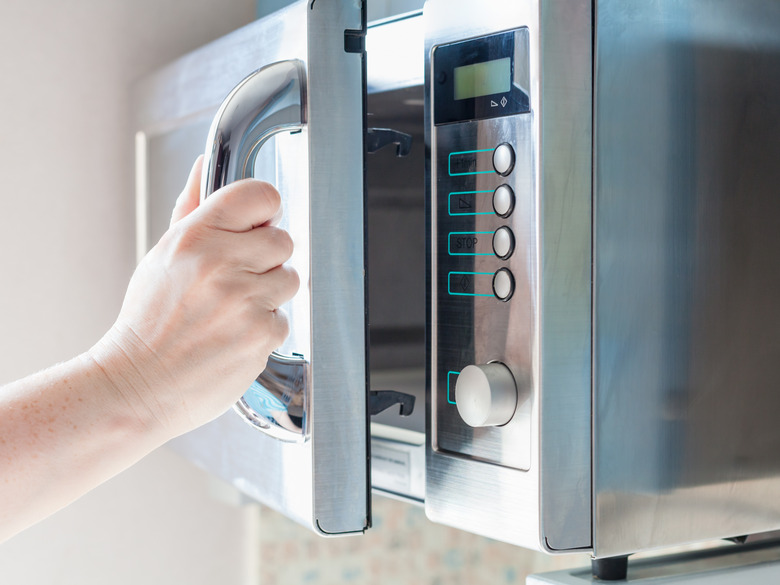Dangers Of Rusted Microwaves
You wouldn't eat food from a rusty can, as it is inherently dangerous. On the same note, Colorado's All Area Appliance Service notes that rust in microwave ovens can lead to serious problems if not addressed immediately.
Rust on the outside of the microwave isn't an issue, unless it eats its way through to the interior cavity, which causes microwave arcing damage and allows radiation to escape the appliance. As long as the interior of the microwave oven remains sealed and intact, microwave radiation poses no threat to humans; you can sand and repair its interior using microwave paint.
Importance of Microwave Paint
Importance of Microwave Paint
Microwaves are part of the electromagnetic spectrum operating at between 300-megahertz and 300-gigahertz frequencies; they're everywhere. Police use them to catch speeders, cell phone and television companies use them to transmit their signals between towers and food companies make potato chips using microwave radiation. Microwave ovens employ this same technology to heat food, which can also heat human tissue, causing burns when a person is directly exposed to certain frequencies.
The cavity of the microwave oven is outfitted with metal and covered by a microwave paint. Only specially formulated microwave cavity paints can withstand the environment inside a microwave oven. All other paints will more than likely peel and be ineffective after just a few days or weeks.
This metal bounces the microwaves inside the oven to heat the food. Rusted parts on the interior will still bounce the waves, but the longer the rust has a presence, the more it can grow. Once the paint inside the oven cavity begins to chip, oxygen bonds with the metal to form rust. Once rust forms, it weakens the metal and breaks it down, and the continual use of a microwave oven with a rusted interior is an accident waiting to happen.
Remove the Rust and Repaint
Remove the Rust and Repaint
Examine the interior of the oven cavity carefully. If any of the rust spots have small pinholes, you cannot repair the oven; you must replace it.
Some microwaves have known paint-chipping issues, and their manufacturers often recommend replacing the microwave. But with the advancements in paint technology, you can use a special food-safe microwave cavity paint to repaint the oven's interior. Once you notice any paint chipping or rust, remove the rust to prepare the cavity for painting. Your work's success depends on how well you prepare the surface before painting.
Although you'll follow the manufacturer's instructions for all prep work and paint application, the following is an overview of the basic process with some appliance spray paints. Always be sure to paint in a well-ventilated area, as cavity paint emits stronger fumes than other paints. Wear a NIOSH-approved respirator or mask if needed.
-
Unplug the microwave from its power source.
-
While wearing rubber gloves, clean the affected area on the interior of the oven with a mixture of 10 parts water and 1 part trisodium phosphate. Rinse with a clean cloth wrung out in water, changing the rinse water frequently.
-
Scrape any flaking paint with a putty knife or scraper. You can also use a wire metal brush to remove the rust if you apply it only to the rusted area, as it will damage the good paint as well.
-
Sand only the rusted area, as you don't need to repaint the entire oven's interior. Apply the 60-grit rough sandpaper, moving to the finer grit when most of the paint is gone.
-
Wipe down the sanded area with rubbing alcohol. It is critical that the surface area to be painted does not contain any debris, or the paint won't hold.
-
Tape all the areas you don't plan to paint with the painter's tape and plastic sheeting.
-
Hold the cavity-paint spray can away from the surface you're painting about 8 inches. Spray multiple light coats, allowing each coat to dry as recommended by the product's label, depending on humidity and temperature, which can be as long as 12 hours between coats.
-
Continue adding coats of paint
to build each one up over previous coats that have dried, but avoid applying one thick coat of paint; in the end it won't stick. Let final coat dry for up to three days before using the microwave.
